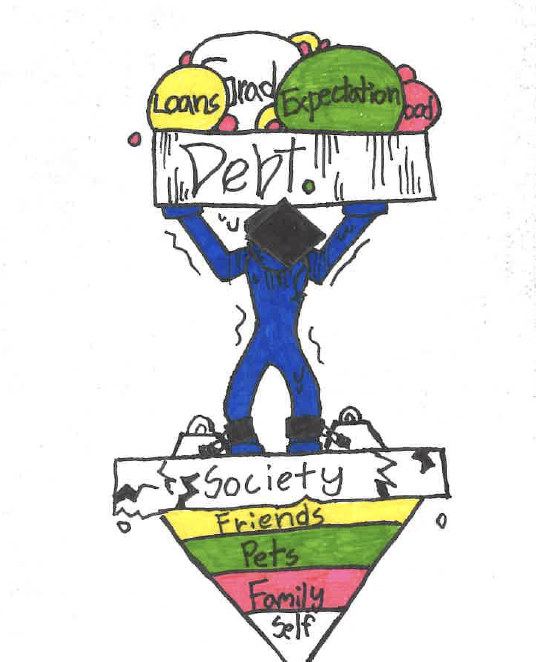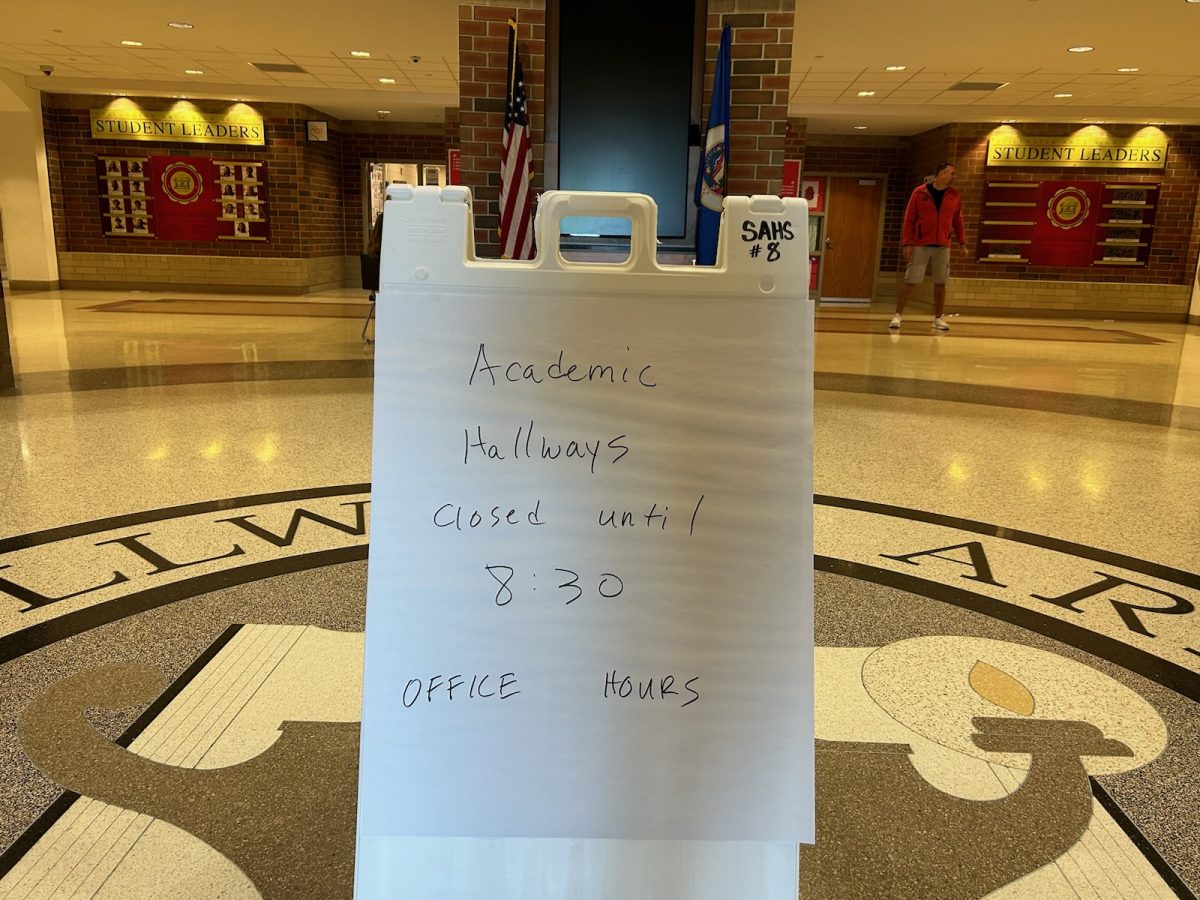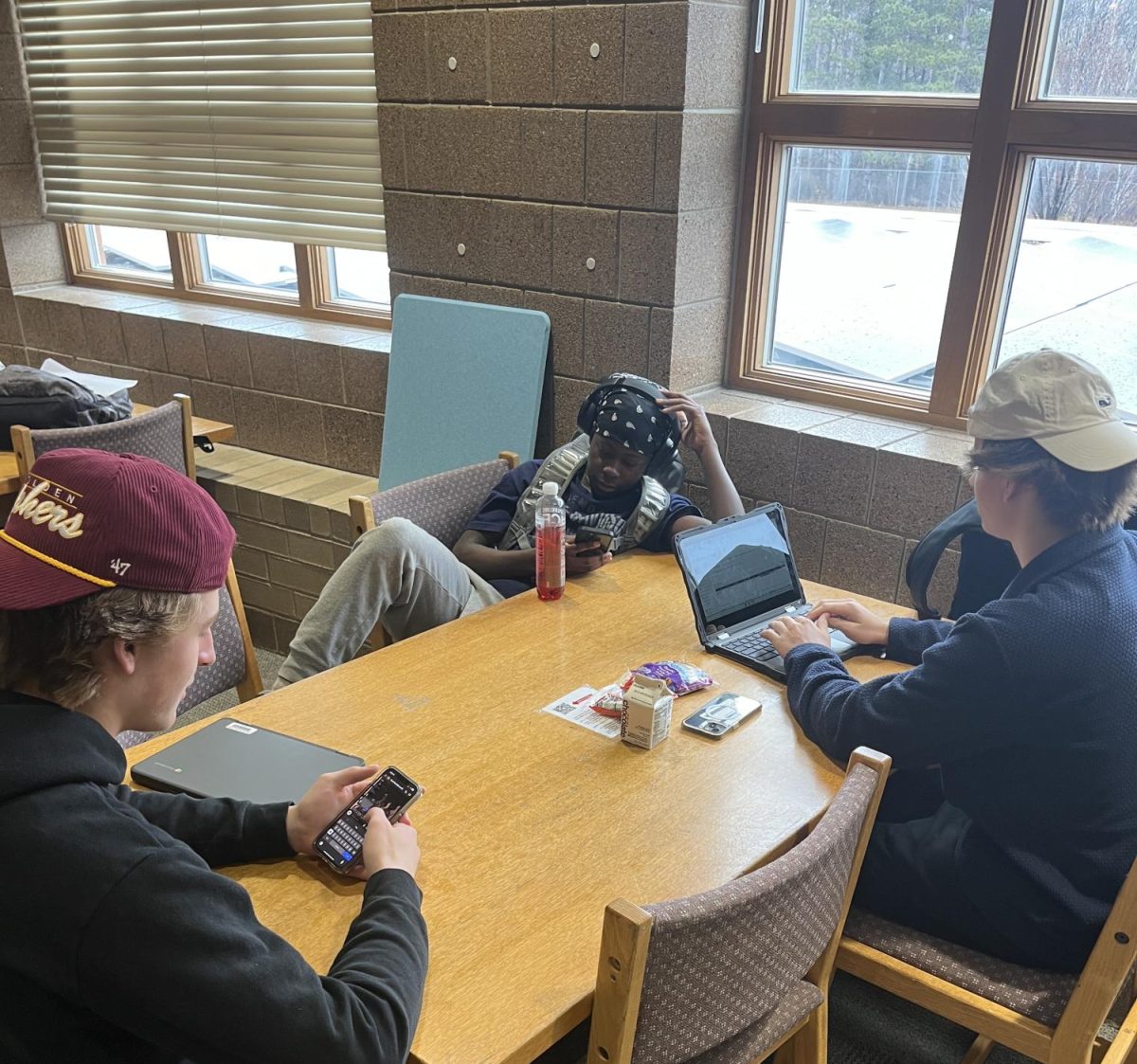As students start applying for colleges and college tuition starts to increase, the thought of student debt is dreadful. Besides the experience, college gives valuable life-impacting education, everybody deserves a chance at, no matter if they can afford it or not. It is time for the government to give students a chance to go to their dream school, without having to worry about a lifetime of debt.
Student debt is rising at an alarming rate, more than double over a span of two decades. There is more student debt in the U.S. than debt from auto loans and credit cards. Collectively, U.S. borrowers have an estimated total of $1.74 trillion (Sept. 2024) compared to in 2006, student debt was in total, $521 billion.
“We need to look at how to make college more affordable in the first place,” counselor Sydney Piras said.
In Minnesota 2023, they had passed the Minnesota North Star Promise, where students complete the FAFSA and if their family makes less than $80,000, students are given a free ride to any Minnesota colleges. This initiative aims to reduce student debt by covering the gap between federal or state grants and the full cost of tuition. For many families, this means that they could have a complete debt-free college experience. By reducing the out-of-pocket costs, this can help students graduate with little to no debt, which can have long term benefits for financial stability.
The average amount of time to pay off all student debt is around 10-25 years, with some professional graduates being around 45 years.
“It’s going to be expensive, but I think as long as the profession pays off, and the money starts flowing in, pay that student debt off,” senior Surrane Fufa said.
Taking a common profession many high schoolers want, in the medical field, the average amount of time needed to pay off debt is 10 to 30 years. Every month money is needed to be set aside to slowly pay off the student debt needed to be in the profession. The average amount is around $200-$700 needed per month. That amount coming off of a fresh college graduate is a lot in itself, but with other necessities and bills is an even bigger worry.
Thanks to organizations like FAFSA, students can worry less about student debt.
“I’m not terribly concerned about taking on student debt because of FAFSA and scholarships,” Fufa said.
FAFSA, or Free Application for Student Aid is an organization by the U.S. department of education meant to determine eligibility for financial aid in college. By completing the FAFSA, students have the ability to access federal grants, work-study opportunities, and low-interest loans. This helps make education more accessible, especially to students who are from low to middle income families who don’t have the financial stability to cover college related expenses like books, tuition, and housing.
Students worry that student debt will affect future purchases.
“It’ll definitely put me under pressure as I progress. Impacts my credit score if which I’m unable to pay it will affect job opportunities and transactions, especially for housing,” senior Coolsjes Singvi said.
Carrying student debt can significantly affect the financial profile of someone, especially when it comes to the debt-to-income (DTI) ratio. When student loans are factored into the DTI, it can increase, which can signal to lenders that people are tied up in debt. A high DTI ratio raises concerns and red flags to lenders because it suggests that the people applying are in a financial strain. As well as difficulty getting a loan with student debt, the interest rates and terms might be affected as well due to the fact that lenders need to see if they are reliable paying back their debt or not.

















